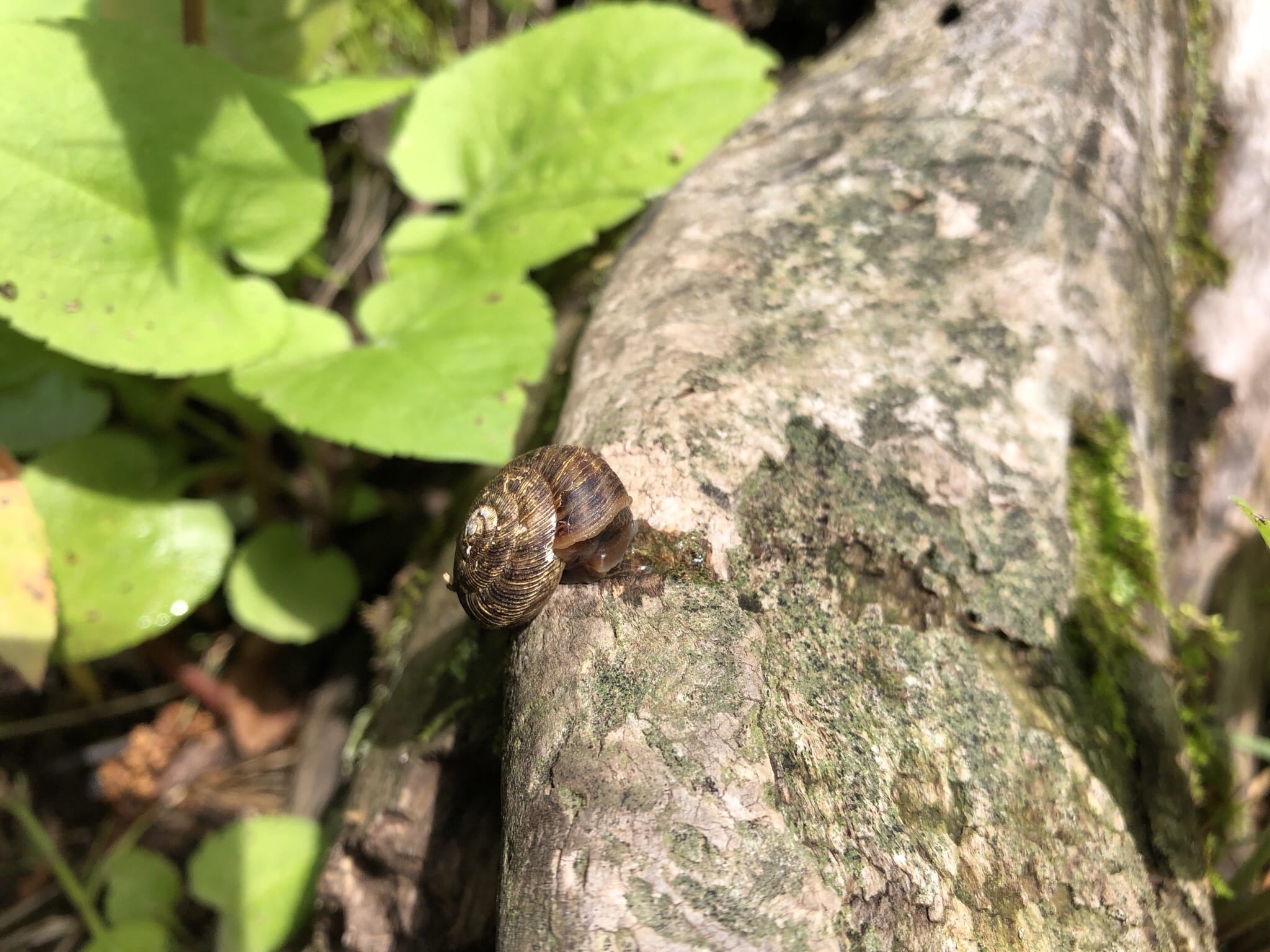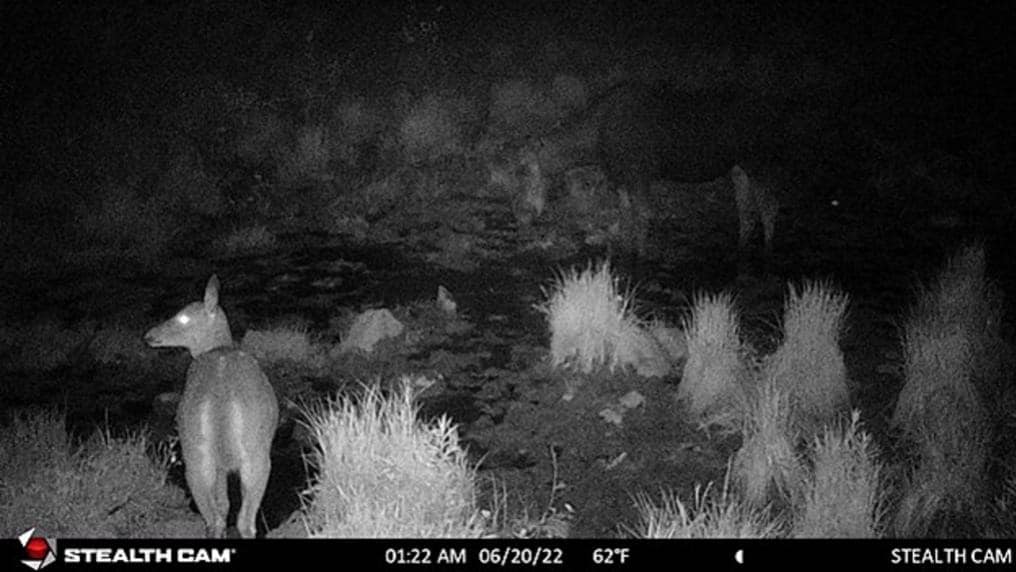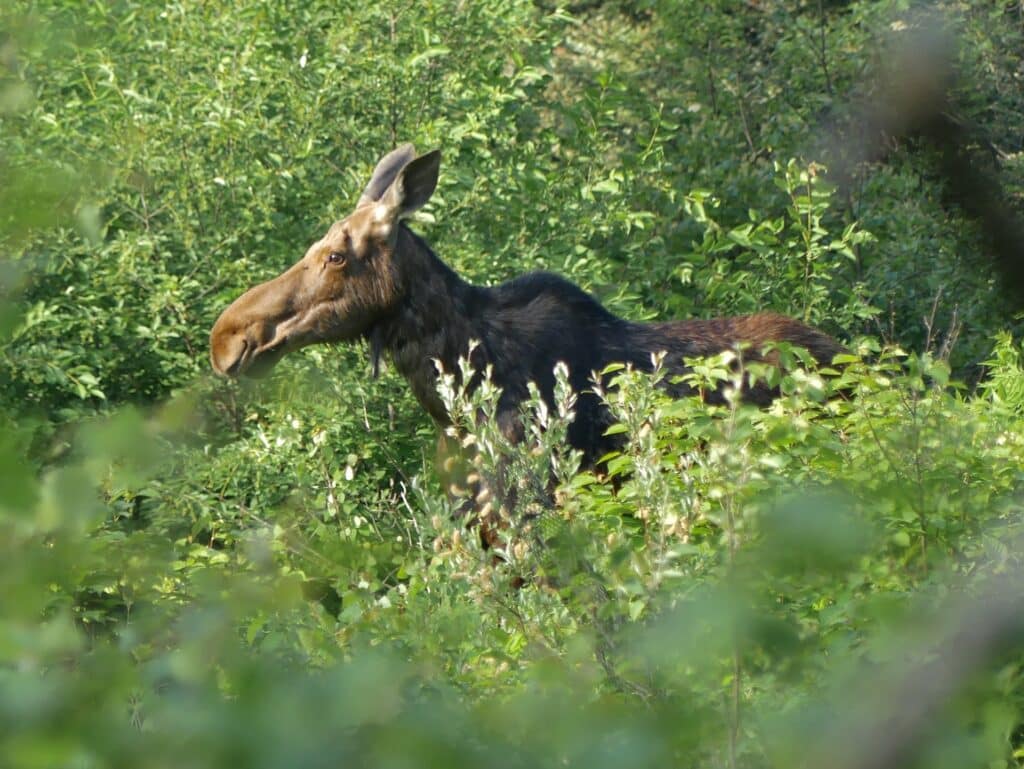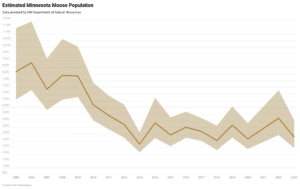
A recent study conducted on the Grand Portage Indian Reservation has uncovered a new clue about problems facing Minnesota’s moose population. The number of moose in Minnesota began to fall drastically in the mid-2000s, and has now leveled off at about half its previous size. The reasons for the decline are many, including an increased number of white-tailed deer, as well as climate change, a rebounding wolf population, ticks, and more.
The new research, published in the journal Food Webs, studied how parasites carried by deer are transmitted to moose, in which they cause illness and death. The parasitic organism called Parelaphostrongylus tenuis, or simply brainworm, has a complex life cycle that relies on ungulates (deer, moose, elk) eating snails and slugs. Those snails and slugs must be infected by white-tailed deer through their feces.
“We’ve known for a long time that brainworm has been one of the biggest factors in the [moose] population decline,” lead author William Severud of South Dakota State University said. “The biggest mystery has always been, how are they catching it?”

Mineral lick meetings
The scientists with South Dakota State University, Michigan State University, and the Grand Portage Band of Lake Superior Chippewa think they’ve discovered an answer to that question. Deer and moose seem to interact most at certain sites, where their behavior is optimal for transmission.
“We posit that deer and moose co-occur at discrete landscape features such as mineral licks, natural springs, and seeps, that create opportunities for high density contacts among deer, moose, and gastropods,” the researchers wrote.
One reason they think the theory is plausible is because only a very small amount of gastropods (slugs and snails) found by scientists are infected with brainworm larva. So it makes sense that areas where deer are concentrated may have the highest proportion of infected organisms, and when moose visit, they’re at risk.
Mineral licks are generally defined as wet areas where the soil contains minerals. Wildlife visit the sites to drink water or consume soil, seeking sodium and carbonates that help them stabilize their digestive tract.
Using remote cameras at such sites around the Grand Portage Reservation, the team was able to document what appears to be an easy transmission of the parasites. Their cameras caught deer and moose at mineral licks at the same time, with the moose appearing to be eating the soil, and the deer defecating.
The behaviors appear to facilitate an easy path for brainworm to travel from deer to moose.

Problematic parasite
Brainworm’s complex life cycle begins with gastropods, the family of organisms comprised of slugs and snails. Deer may accidentally consume one of these infected gastropods while feeding — perhaps accidentally, or perhaps as a means to seek protein. Brainworm larvae then find their way from the deer’s stomach to its spinal cord and brain, where they mature into their adult form.
The adult worms then reproduce by laying eggs in the membrane surrounding the deer’s brain. When the larvae hatch, they make their way through the bloodstream to the lungs, and are then coughed up into the animal’s windpipe. Then they are swallowed and pass through the digestive tract, and are finally excreted in feces, where they once again infect a gastropod.
From that gastropod, a moose can consume the parasite, which can’t reproduce in the animal, but can cause neurological damage. Infected moose may suffer paralysis, a lack of fear, and inability to feed, leading to their death.
For the Grand Portage Band and other Ojibwe tribes, saving moose is about saving a key food source and cultural resource. The researchers say the animals “are a primary subsistence food used by the Anishinaabeg (people) of Grand Portage Band historically and presently.” The decline of the moose population “is of concern to indigenous communities that rely on moose as a subsistence food, as well as to wildlife watchers, sports groups, and tourism-centered economies,” the scientists write.
The scientists say their new findings could help protect moose. Approximately 25 percent of moose deaths in northern Minnesota are caused by Parelaphostrongylus tenuis, and reducing transmission could cause a big benefit.
By identifying where transmission of the parasite is occurring, the researchers say several steps could be taken. Deer living in the area of known mineral licks could be culled to reduce the risk of infecting moose. Mineral licks could also be “decommissioned,” with steps taken to discourage moose from visiting them.
More information:
- What’s behind Minnesota’s moose population decline? – South Dakota State University
- Brain worm – NYS Department of Environmental Conservation
Reference:
William J. Severud, Todd M. Kautz, Jerrold L. Belant, Seth A. Moore, Mineral licks as a potential nidus for parasite transmission, Food Webs, Volume 36, 2023, e00299, ISSN 2352-2496, https://doi.org/10.1016/j.fooweb.2023.e00299.


